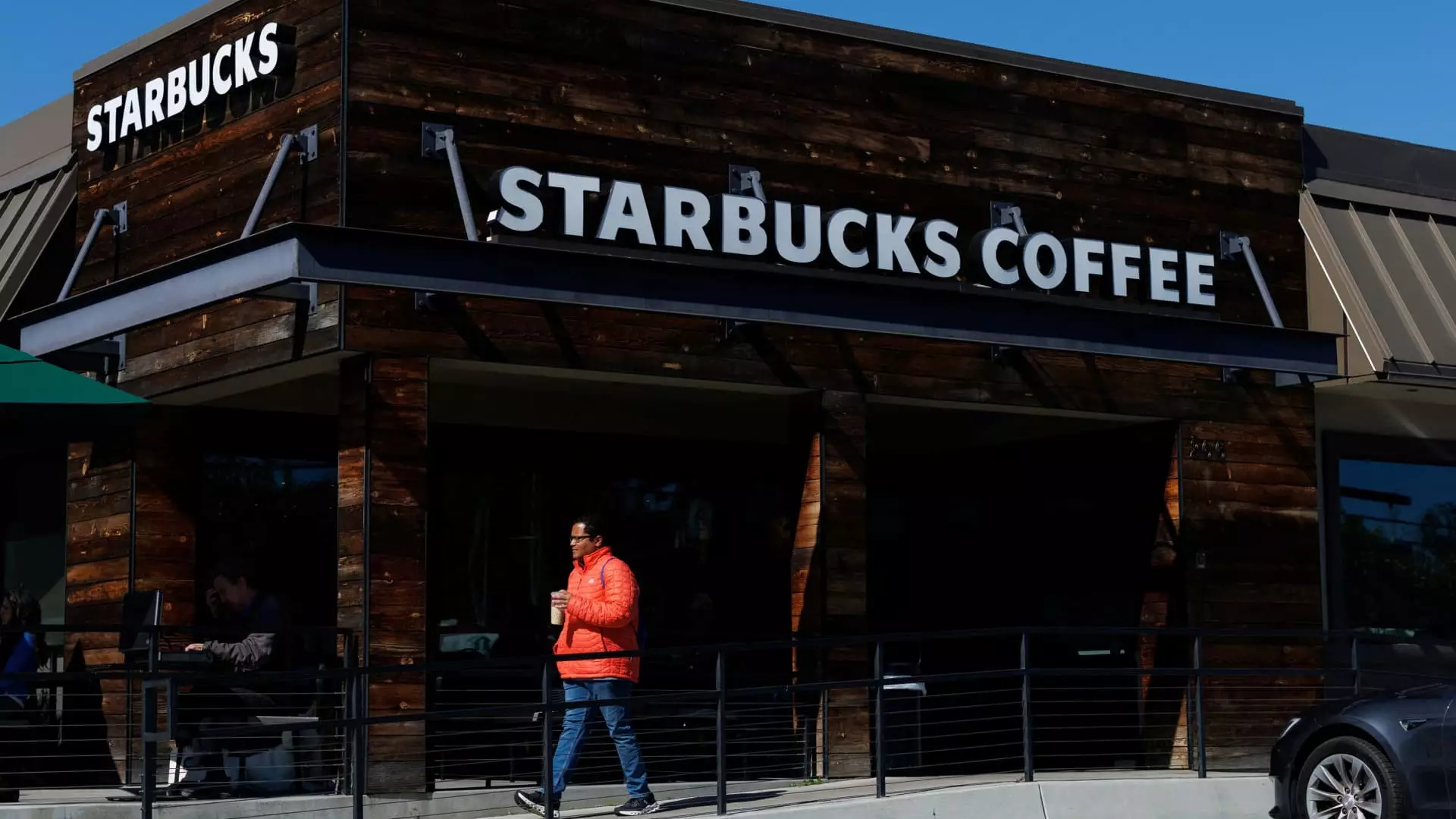Recent developments in the U.S. economy have stirred significant turmoil in the restaurant sector, sending stocks plummeting amid fears of an impending recession. Investors recently watched with trepidation as President Donald Trump imposed substantial tariffs on imports from major trading partners, a move that, while not directly affecting most restaurant chains, casts a long shadow of uncertainty over the consumer spending landscape. Amid these mounting concerns, it becomes critical to dissect not only the immediate impacts on the restaurant industry but also what this means for consumers and the broader economy.
It’s disconcerting that in a thriving economy, the restaurant sector, traditionally viewed as a bellwether of consumer confidence, has begun to show early signs of distress. When industry giants like Starbucks see their stock prices succumb to declines of more than 3%, it begs the question: Is consumer confidence really as solid as we’ve been led to believe? The downward spiral has been alarming, as analysts scramble to make sense of the chaotic market environment where seemingly minor political decisions unravel consumer stability.
The Ripple Effect of Economic Policies
UBS analyst Dennis Geiger provided a poignant observation: while the direct impact of tariffs on restaurants may appear manageable, it is the indirect consequences that draw the most concern. Rising inflation, a certain byproduct of these new trade policies, is poised to inflict further wounds on consumer wallets, translating to lowered spending in restaurants. In an age where every penny counts for American families, particularly those in lower-income brackets, we may see a drastic shift in dining behaviors, influencing everything from fast-casual eateries to upscale dining establishments.
To extrapolate the current trend, the speed and manner in which consumer spending can decline should never be underestimated. As industries struggle with increased operational costs attributed to tariffs, companies may face two options: absorb the costs and tighten their margins or pass those increased prices onto consumers. The latter, particularly, seems ill-advised amid recession fears. The challenge then morphs into not just survival, but navigating a landscape where consumers may forgo dining out altogether in favor of hoarding their dwindling cash for essentials.
Regional and Political Concerns Lens
A strong indicator of what lies ahead can be seen in specialty areas like coffee, which has witnessed a sharp trading decline. The unfortunate reality is that major coffee-producing nations, notably Vietnam and Brazil, are feeling the brunt of new tariffs, leading to spiraling costs for companies like Starbucks. Don’t overlook the agrarian politics at play here; when consumers in China previously boycott Western brands for political reasons, one can hardly blame investors for getting jittery about future international sales for these colossal chains.
Moreover, certain chains seem to be bearing the brunt of this crisis more acutely than others. Dine Brands—home to Applebee’s and IHOP—experienced a sizeable drop in shares, reinforcing the notion that casual dining may be especially vulnerable to changing consumer sentiment. As younger generations prefer more wholesome, fresh dining experiences, the sluggishness of traditional restaurants threatens their survival amidst a shifting culinary landscape.
The Fast-Food Shield: A Double-Edged Sword?
Historically, fast-food chains tend to weather economic storms better than their full-service counterparts as consumers look for affordability amidst financial anxiety. Yet, last year’s trends have been defiant against that notion, revealing that even fast-food chains like McDonald’s and Yum Brands have grappled with changing consumer behavior. Declining same-store sales in quick-service restaurants reveal a troubling pattern: those used to dining out less frequently were unable to justify the expense, while those who could afford to indulge did so in less volume. A grim reminder of how distant the safety nets once thought to be inviolable can be, the market’s pulse grows faint.
Consumers have a choice to make in times of economic uncertainty, and if current trends unveil anything, it’s that even the best-prepared establishments may falter. Ultimately, in this chaotic moment, the restaurant sector stands on a knife’s edge, and its fate will likely reflect the economic inertia of American consumers, pulling at the threads of an already fraying fabric.


Leave a Reply